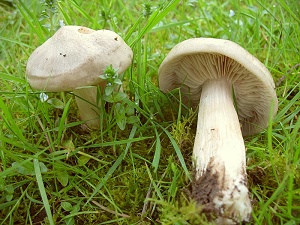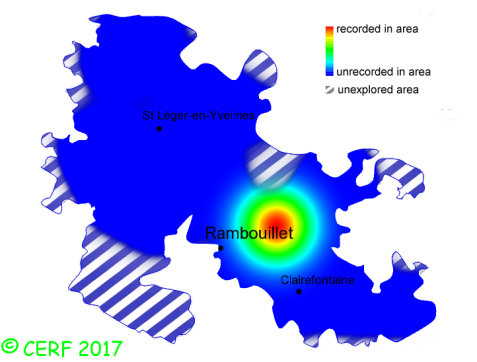| Entoloma sepium (Noulet & Dass.) Richon & Roze |
|
|
|
|
|
|
The cap is whitish, ivory white to buff-yellowish and sometimes yellow-brown, bell-shaped then convex, broadly umbonate; its margin is smooth, inrolled a long time. The cap surface is smooth, slightly viscid-greasy when young, then silky. The stem is fibrillose, whitish, sometimes reddening in wounds, yellowish or pinkish towards base, without ring. The flesh is white, red brown in insect bites, unchanging, or slightly turning yellow when exposed to air; its taste is mealy; the odour is fruity or mealy; its texture is fibrous. The gills are white then pink, adnate to emarginate, loosely crowded (nb of gills per 90° ~ 21 ). The spore print is pink. This species is saprophytic. It grows on the ground, in forest edges, thickets, hedges, with blackthorn and members of the Rosacea family (rose, hawthorn, cherry…). The fruiting period takes place from March to September.
Chemical tests : flesh slowly tuning blue when in contact with gaïac. Distinctive features : Pale, ivory-white to buff-yellow cap, with a broad umbo; white stem, stained with pink or yellow at the base; white flesh, slightly turning yellow when exposed to air; with blackthorn mostly and members of the Rosacea family (rose, hawthorn, cherry…), in spring Entoloma sepium is rare and confined in the forest of Rambouillet, and is quite rare, more generally speaking . | ||
|
page updated on 14/01/18

